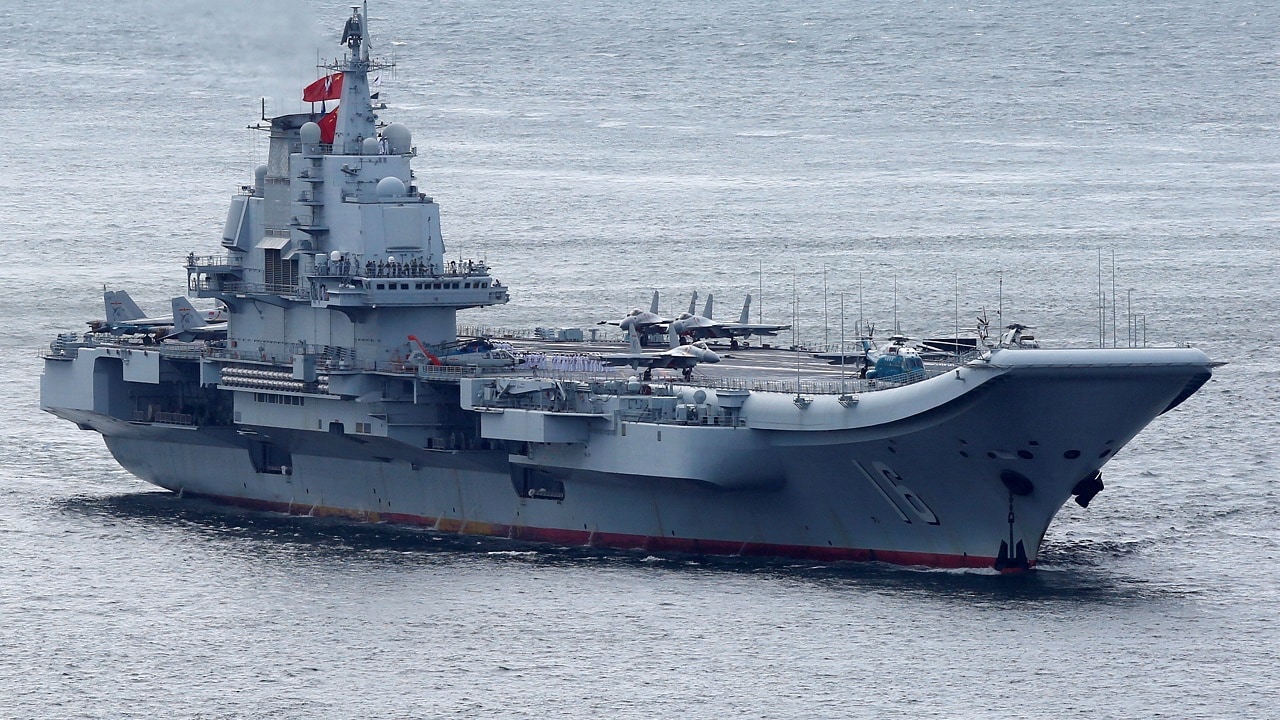China showed off its naval might this week in the Philippine Sea. The People’s Liberation Army Navy (PLAN) aircraft carrier Liaoning conducted training operations, reportedly including some of China’s most sophisticated and realistic combat-oriented drills to date.
(Subscribe to Our YouTube Channel Here)
Liaoning launched and recovered its helicopters in the East China Sea, according to a press release from Japan’s Ministry of Defense. The movements of the carrier and its strike group were closely monitored by the Japan Maritime Self-Defense Force destroyer JS Kirisame (DD-104), while Japanese patrol aircraft performed routine flights to track the movements of PLAN vessels.
The carrier last took part in exercises in May. Those drills lasted two weeks, during which the warship conducted more than 300 aircraft sorties.
Type 055 Destroyers Involved
The current drills, which are expected to last through the end of the year, involve a record number of Type 055 large destroyers. This suggests the exercises include new training courses to integrate additional naval elements into the carrier strike group. The PLAN currently has five out of a planned 16 Type 055 destroyers in operation. The warships are classified as cruisers by the U.S. Navy, and the vessels can fulfill a similar role to that of a Ticonderoga-class cruiser.
The Type 055 has a displacement of 12,000 tons and is considered the world’s second-most powerful destroyer, after the U.S. Navy’s $4 billion Zumwalt-class. These PLAN warships were designed to fire surface-to-air missiles, anti-ship cruise missiles, land-attack cruise missiles, and missile-launched anti-submarine torpedoes. It has been reported that some of the Type 055 destroyers have even been equipped with an advanced 20-megawatt turbo generator to power high-energy weapons including lasers and rail guns.
China’s First Carrier
The Liaoning, or Type 001, is the PLAN’s first carrier. The vessel was originally built for the Soviet Navy as the Kuznetsov-class aircraft cruiser Riga.
Following the collapse and dissolution of the Soviet Union in 1991, construction was halted and the unfinished vessel was put up for sale by Ukraine. The stripped hulk was purchased by a Chinese firm, reportedly to be converted into a floating hotel and casino.
Since the carrier had been left to deteriorate in the elements, it seemed unlikely it would be used as a warship. Yet it was eventually refurbished by the PLAN and became China’s first aircraft carrier.
The acquisition and refurbishment of the vessel played a critical role in giving Beijing a viable carrier program, and it led to the construction of China’s first domestically-built carrier, Shandong, was based on the Kuznetsov-class design and features a ski jump-style deck.
A third, domestically built carrier, the Type 003 Fujian, was launched earlier this year.
Author Expertise and Experience: A Senior Editor for 1945, Peter Suciu is a Michigan-based writer. He has contributed to more than four dozen magazines, newspapers, and websites with over 3,000 published pieces over a twenty-year career in journalism. He regularly writes about military hardware, firearms history, cybersecurity, and international affairs. Peter is also a Contributing Writer for Forbes and Clearance Jobs. You can follow him on Twitter: @PeterSuciu.

